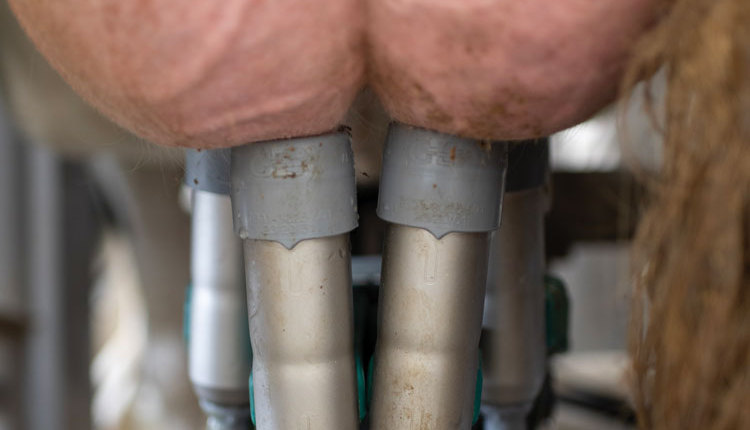The author is a retired professor of dairy science from South Dakota State University. He is now a consultant with Dellait Dairy Nutrition & Management.

Dairy producers across the globe aim for financial sustainability amidst a sea of environmental challenges. Given that situation, a balance must be struck between the environmental concerns and the economic realities to ensure long-term solutions that are both sustainable and financially viable.
Environomics is a new concept that focuses on both the sustainable and financial impacts. From the environmental standpoint, economic benefits often center on reducing methane production for dairy producers. Reducing carbon production losses by 20% can significantly impact farmers’ bottom lines and make better use of resources. Keep in mind that carbon losses in the form of methane are carbons that have already been paid for in the form of feed. Incorporating environomics into a farm’s decision-making process can strike a balance between economic viability and environmental sustainability, ensuring both sustainable profits and environmental health.
Methane production, however, is a natural process that occurs in cows’ rumens when they consume feed. It’s not a choice for them. Methane acts as a “sink” for excess hydrogen generated during fermentation, allowing the cow to eliminate it from the system. By reducing methane emissions, farmers can redirect the carbon used for methane production into valuable nutrients such as milk protein and fat.
When dairy cows consume more feed to enhance milk production, methane emissions also go up. Two common metrics are used to measure and compare these emissions: methane yield and methane intensity.
Yield measures the amount of methane emitted per unit of dry matter intake, typically expressed in grams of methane per kilogram of dry matter intake. This metric allows for an accurate comparison of methane emissions between cows with different intake levels.
Methane intensity, on the other hand, measures the amount of methane emitted per unit of energy-corrected milk (ECM). It’s usually expressed in grams of methane per kilogram of ECM. This metric takes into consideration that cows producing more milk may also produce more methane, allowing for a comparison of emissions efficiency between cows or groups of cows.
Does it work?
A recent review published in the Journal of Dairy Science focused on quantifying the opportunities and impact of reducing methane emissions in intensive dairy production. The authors assessed various approaches that have demonstrated an effect in vivo and estimated their maximum potential reduction.
The approaches were ranked in order of importance for their maximum potential methane reduction as follows:
- Genetic selection (19%)
- Management (18.5%)
- Feeding and nutrition (15%)
- Rumen modifiers (5%)
Some of these approaches interact with each other, so the combined effect is not simply the sum of their individual effects. However, when all of the approaches are combined, their effect on reducing methane emissions can reach up to 30%.
Shifting losses to accretion
To reduce methane emissions in dairy production, it is important for producers to think on a herd basis, rather than focusing solely on individual cows. This means considering the amount of fat and protein being shipped from the farm, and identifying interventions from the list mentioned above that can have the greatest impact for the dairy farm.
While genetic selection holds promise for reducing methane emissions, it is still in its early stages and may not be the most practical solution for all farms. Instead, producers can prioritize interventions that address feeding and nutrition or cattle management, which have significant impact on methane emissions.
Investing in rumen modifiers, which have a smaller effect of only 5%, may not make sense for farms that are already struggling with feeding and management issues. Ultimately, reducing methane emissions in dairy production requires a holistic approach.
Effective management, particularly feeding, is crucial for reducing methane emissions and is second only to genetics. To achieve this, there are several key components to consider, such as elevating the digestible dry matter intake, aiming for a feed efficiency of 1.5, providing feed consistency, ensuring good quality silage and hay, pushing feed at least five times a day, and providing enough bunk space (at least 36 inches per cow).
Aim to produce less than 15 grams of methane per liter (57 grams per gallon) of milk produced. This can be calculated by knowing the cows’ dry matter intake and milk production on a herd basis. The methane emission formula (in liters/day) is as follows:
Methane (liters/day) = [62 (±5.5) + 25 (±0.54) x dry matter intake] / liters of milk produced.
Moving forward, dairy producers must balance environmental and economic concerns to achieve sustainable production. Environomics, a concept that focuses on the economic benefits of reducing methane production, can help prioritize sustainable practices that benefit both the environment and dairy farmers.
Monitoring methane yield and intensity can assess the effectiveness of feeding and breeding approaches. Effective cattle management and feeding are key to reducing methane emissions, which can benefit both the environment and dairy farmers financially.






